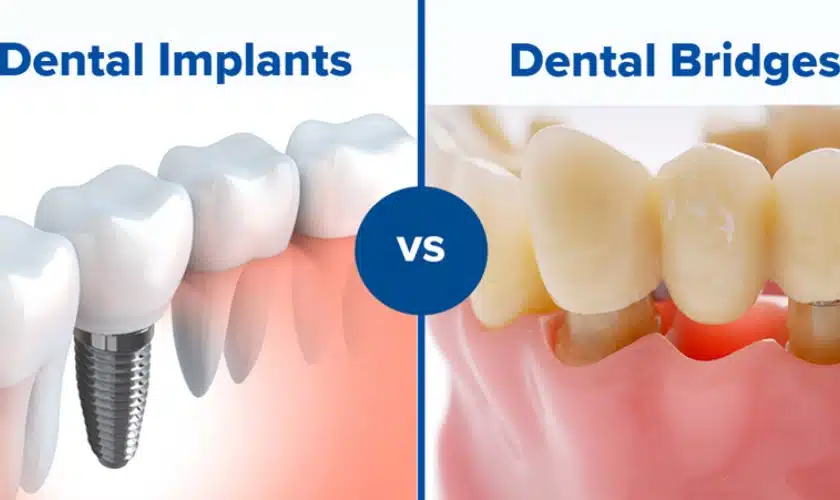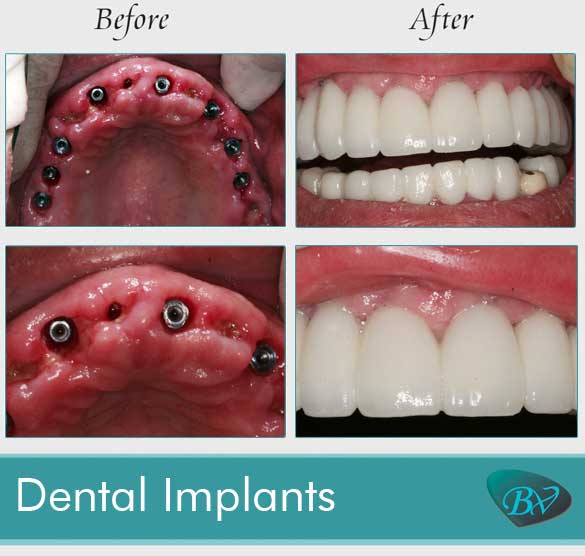10 Easy Facts About Dental Sense Shown
10 Easy Facts About Dental Sense Shown
Blog Article
What Does Dental Sense Do?
Table of ContentsNot known Incorrect Statements About Dental Sense The 45-Second Trick For Dental SenseAbout Dental Sense5 Simple Techniques For Dental Sense
are medical gadgets surgically implanted into the jaw to restore an individual's capacity to eat or their appearance. They offer support for man-made (fake) teeth, such as crowns, bridges, or dentures. When a tooth is lost due to injury or illness, an individual can experience complications such as fast bone loss, defective speech, or changes to eating patterns that lead to discomfort.Dental dental implant systems include a dental implant body and dental implant joint and may additionally consist of an abutment addiction screw. Dental veneers cost. The oral implant body is operatively inserted in the jawbone in place of the tooth's root. The dental implant abutment is typically affixed to the implant body by the joint addiction screw and extends through gum tissues into the mouth to sustain the connected synthetic teeth
(http://tupalo.com/en/users/8103990)Framework of The Dental Implant System picking oral implants, talk to your oral supplier concerning the possible advantages and dangers, and whether you are a candidate for the procedure. Things to consider: Your overall health is an important element in determining whether you are a good prospect for oral implants, exactly how long it will take to recover, and how much time the implant may remain in location.
Smoking might influence the recovery process and lower the lasting success of the implant. The recovery procedure for the implant body might take a number of months or longer, during which time you typically have a short-lived joint in place of the tooth. the dental implant treatment: Very carefully follow the oral hygiene instructions provided to you by your oral copyright.
Dental Sense - Truths
Implant failure can result in the need for an additional surgery to repair or change the dental implant system. Restores the capability to eat Restores aesthetic look Helps maintain the jawbone from reducing due to bone loss Protects the health of the surrounding bone and gums Assists maintain surrounding (nearby) teeth steady Boosts lifestyle Damage to surrounding all-natural teeth throughout implant placement Injury to the surrounding tissues throughout surgery, such as sinus perforation Injury during surgical treatment (as an example, crack of surrounding jawbone) Inadequate function, such as seeming like the teeth do not attack with each other typically An experience that the tooth hangs or twisting in location arising from a joint screw loosening up Implant body failing (looseness of the dental implant body) as a result of systemic infection, which might be much more likely in individuals with unchecked diabetes mellitus due to local infection in bone and gums supporting the implant body due to delayed healing, which may be most likely in patients who smoke Difficulty cleaning the gum tissues around the dental implant, leading to bad oral hygiene Neglected periodontal disease Post-surgical pins and needles due to nerve impingement or damage Constantly inform healthcare companies and imaging technicians that you have oral implants prior to any type of magnetic resonance imaging (MRI) or x-ray procedures.
FDA is not knowledgeable about any kind of damaging occasions reported for MRI or x-ray procedures with dental implants. Oral implants systems are commonly made from materials that follow global agreement requirements of the International Organization for Standardization (ISO) or ASTM International. These criteria have information of what makes a safe material.

An oral implant is a structure that replaces a missing out on tooth. With screw-like tools, the cosmetic surgeon inserts an implant right into the jawbone, and it acts as a support for an artificial tooth, called a crown.
Dental Sense Fundamentals Explained
Some individuals are not qualified for dental implant surgical procedure. It is for oral doctors to run on individuals with: intense illnessuncontrollable metabolic diseasebone or soft cells condition or infectionIf these concerns are resolved, an individual can have the surgical treatment. In, dental cosmetic surgeons refrain from operating on individuals with: If individuals with any one of the above go through dental implant surgical treatment, there is a higher threat of the dental implant stopping working.

Dental dental implant surgical procedure is an individualized procedure. It's not the same for everybody. Yet the following provides a basic summary of what you can expect your dental practitioner, oral cosmetic surgeon, periodontist or prosthodontist to do: Put the implant surgically. Give you time to heal. Connect the blog post and last crown, bridge or denture.
Next, your cosmetic surgeon will very carefully put the oral implant into your jaw. Your specialist will certainly rearrange your periodontals and close the cut with stitches. If your implant is near the front of your mouth, your dental professional will make a short-term tooth for you to wear until you recover. This way, you will Get the facts not have a gap in your smile while you recover.
The 25-Second Trick For Dental Sense
Your copyright can tell you what to expect in your circumstance. Throughout the recovery phase, your jawbone needs to fuse to the oral implant. This procedure, called osseointegration, is important for security and lasting success. This process can take anywhere from 3 to nine months. Sometimes, it may take longer.
Once your dental implant heals, your dental professional can affix the abutment (little adapter message) and your last restoration (crown, bridge or denture). This normally takes about one hour to complete and might require a 2nd small surgery. You shouldn't really feel any discomfort throughout your oral implant procedure since your service provider will certainly make use of medication to numb your periodontals.
Report this page